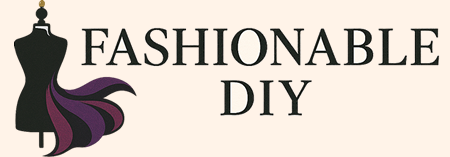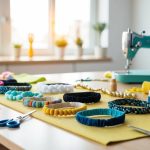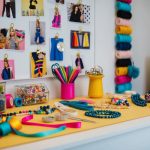Create Your Own Color Palette: Personalized Fashion
Using Adobe Color
Adobe Color is favored by many for creating unique color palettes. It provides sophisticated features for both beginners and professionals. Adobe Color allows users to generate schemes from scratch or extract palettes from images. This offers an opportunity to bring inspiration directly from one’s surroundings into their wardrobe.
The platform offers various color rules and modes, including complementary, monochromatic, and analogous. Through these, it gives users structured guides to create harmonious blends. Additionally, Adobe’s interface permits the precise adjustment of hue, saturation, and brightness, enhancing the user’s ability to curate perfectly balanced palettes. These capabilities make Adobe Color an essential tool for modern fashion enthusiasts seeking to personalize their style.
Integrating Color into Fashion Components
Incorporating a personalized color palette in fashion can enhance individual style by strategically selecting colors for different fashion elements. Thoughtful use of color in accessories and fundamental wardrobe pieces can provide cohesion and flair to any look.
Accessories and Accent Pieces
Accessories offer a versatile way to experiment with color. Items like scarves, handbags, and jewelry can introduce new shades into an outfit without overpowering the main clothing pieces. Choosing accessories in complementary or contrasting colors to the primary outfit can add dimension and interest.
Colorful shoes and belts are also effective for adding subtlety or boldness. A bright pair of sneakers or a vivid belt can transform a simple outfit, creating a more dynamic and eye-catching appearance. Experimenting with textures and materials in accessories can further enhance the role of color in fashion.
Wardrobe Staples
Solidifying the color palette in wardrobe staples creates a foundation for versatile style. Neutral tones in essential pieces like coats, trousers, and shirts allow for flexibility in incorporating other colors. They serve as a base, making it easier to mix and match with vibrant accents.
Incorporating standout colors in staple items like blazers or skirts can define a personal style statement. A muted wardrobe with occasional bold hues can inject personality into everyday wear. Consistency in selected colors across staples ensures that outfits maintain a cohesive aesthetic, facilitating effortless ensemble coordination.
Choosing Colors for Different Occasions
Selecting the right colors for different events can enhance one’s appearance and suit the atmosphere of the event. Formal settings often require a distinct approach compared to casual gatherings, where personal style can shine more freely.
Formal Events
For formal events, elegance and sophistication are paramount. Dark tones like navy, charcoal, and black dominate evening occasions due to their timeless appeal. These colors are often accompanied by muted shirts or blouses, such as white, light gray, or pale blue.
Rich jewel tones, like emerald or deep burgundy, can add a touch of luxury while maintaining a formal demeanor. Accessories often remain understated, ideally matching metals like silver or gold with these color choices. Attendees should consider seasonal palettes too; for instance, winter events might favor darker, cooler tones, whereas summer gatherings may embrace lighter neutrals.
Understanding venue lighting can also influence decisions. Under artificial lighting, some colors appear differently, making it important to test outfits in similar conditions. This thoughtful selection ensures a polished and cohesive look fitting for the occasion.
Casual Gatherings
Casual settings allow for more expression through vibrant and relaxed colors. Daytime events typically embrace lighter, brighter hues such as pastel pinks, yellows, or blues. They convey a lively, approachable vibe. Earthy tones like olive green or terracotta offer a grounded feel, often favored in outdoor gatherings.
Mixing textures and patterns can add depth and interest, aligning with a personal theme. Denim, cotton, or linen materials work well with bold or subtle colors, depending on the desired effect.
Accessories can vary greatly in these scenarios, allowing for creativity. Bright scarves, statement jewelry, or quirky footwear can easily complement or contrast with the main color palette, ensuring a balanced yet playful look. Harmonizing elements of the wardrobe to the event setting accentuates personal style while maintaining comfort.



